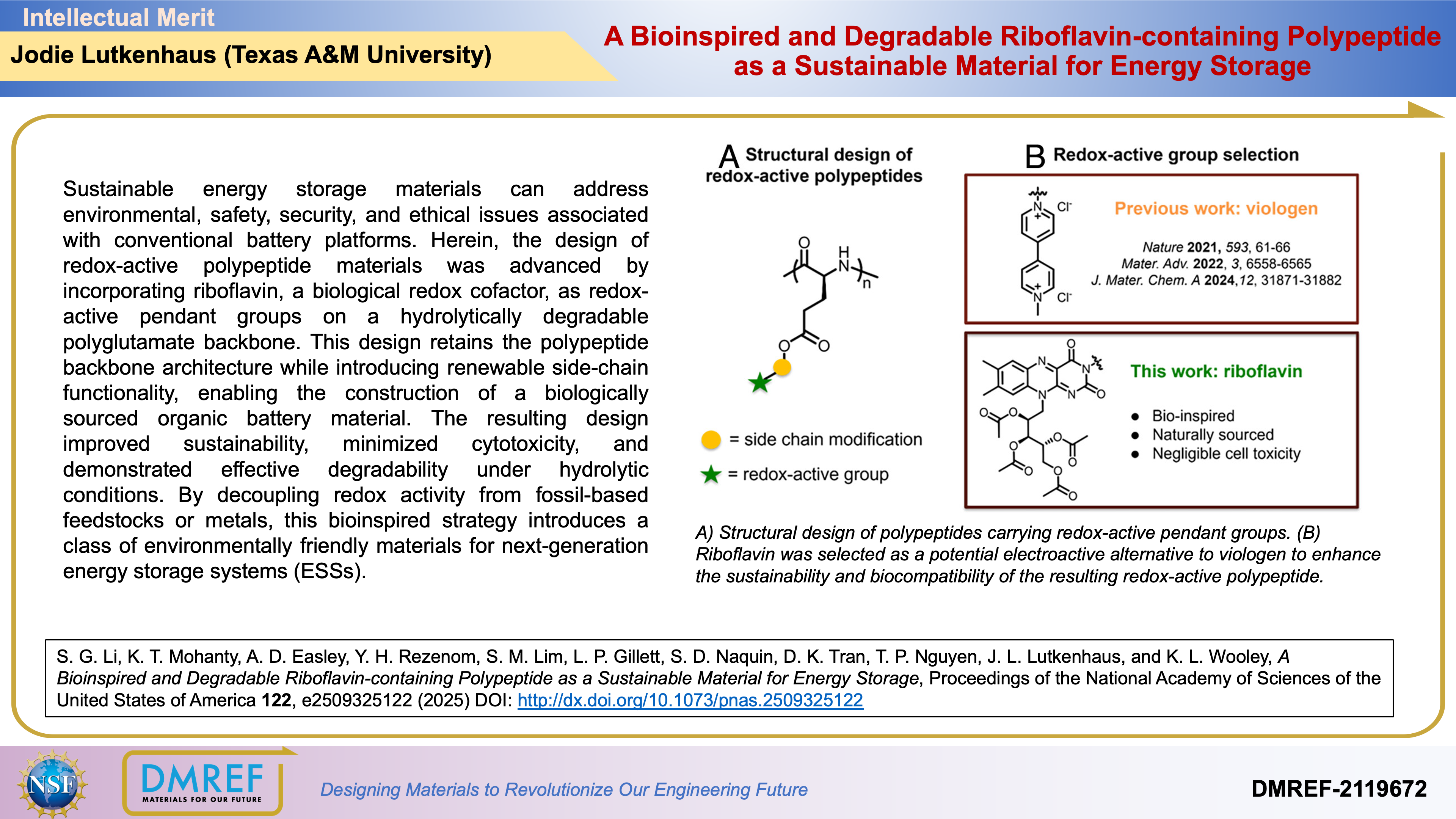A Bioinspired and Degradable Riboflavin-containing Polypeptide as a Sustainable Material for Energy Storage

Sustainable energy storage materials can address environmental, safety, security, and ethical issues associated with conventional battery platforms. Herein, the design of redox-active polypeptide materials was advanced by incorporating riboflavin, a biological redox cofactor, as redox-active pendant groups on a hydrolytically degradable polyglutamate backbone.
This design retains the polypeptide backbone architecture while introducing renewable side-chain functionality, enabling the construction of a biologically sourced organic battery material. The resulting design improved sustainability, minimized cytotoxicity, and demonstrated effective degradability under hydrolytic conditions. By decoupling redox activity from fossil-based feedstocks or metals, this bioinspired strategy introduces a class of environmentally friendly materials for next-generation energy storage systems (ESSs).
